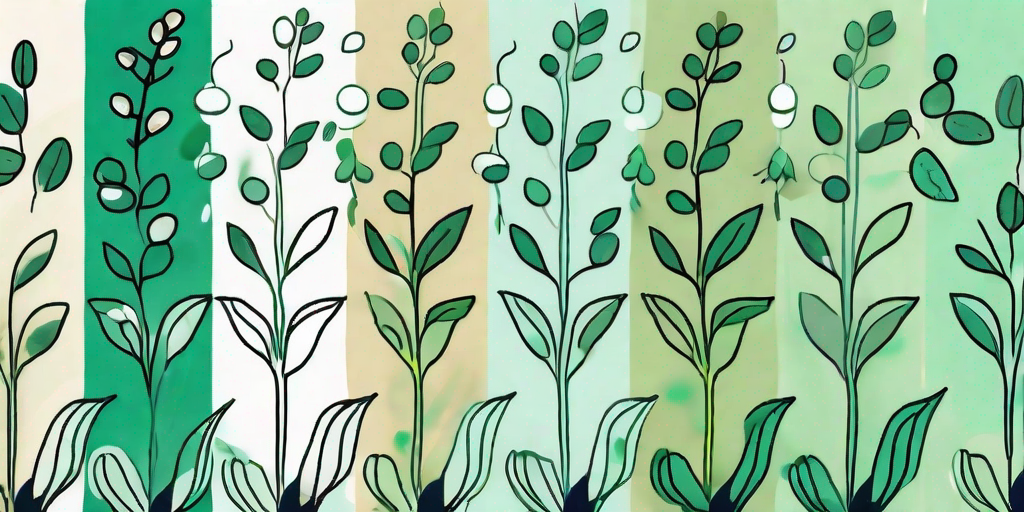
Legumes, those humble beans and peas, have been a staple in our diets for thousands of years. But did you know that these little powerhouses are packed full of nutrients and have some pretty impressive health benefits? Buckle up, because we're about to take a deep dive into the world of legumes.
The Legume Family: More Than Just Beans and Peas
When you hear the word 'legume', your mind probably jumps straight to beans and peas. But the legume family is much more diverse than that. It includes lentils, peanuts, and even alfalfa. So, whether you're a fan of hummus or peanut butter, you're already enjoying the benefits of legumes.
Legumes are unique in the plant world due to their ability to fix nitrogen from the atmosphere. This makes them a key player in sustainable agriculture, as they can improve soil fertility without the need for synthetic fertilizers. So, not only are they good for us, but they're good for the planet too.
Beans, Beans, The Magical Fruit
Beans are probably the most well-known member of the legume family. From black beans to kidney beans, these little gems are a great source of protein and fiber. Plus, they're incredibly versatile. You can use them in everything from salads to brownies. Yes, you read that right, brownies. Don't knock it till you've tried it!
But the magic of beans doesn't stop there. They're also packed with antioxidants, which can help protect your cells from damage. And if that wasn't enough, they're also low in fat and can help to lower cholesterol. Talk about a superfood!
Peas Please
Peas might be small, but they pack a nutritional punch. They're a great source of vitamins A, C, and K, as well as several B vitamins. They're also rich in fiber and protein, making them a great choice for those looking to add a bit of plant-based power to their meals.
And let's not forget about split peas. These little guys are a staple in many cuisines around the world and for good reason. They're easy to cook, incredibly filling, and can be used in a variety of dishes from soups to curries.
How to Incorporate More Legumes into Your Diet
Now that you know all about the benefits of legumes, you're probably wondering how you can start eating more of them. Well, you're in luck. Legumes are incredibly versatile and can be used in a variety of dishes.
One of the easiest ways to incorporate more legumes into your diet is to add them to salads. Chickpeas, black beans, and lentils all make great additions to any salad. Not only do they add a bit of crunch, but they also add a boost of protein and fiber.
Get Creative with Hummus
Hummus, a delicious spread made from chickpeas, is another great way to add more legumes to your diet. But don't just stick to the traditional version. Get creative! Try adding roasted red peppers, olives, or even beetroot for a twist on the classic.
And don't just use hummus as a dip. It makes a great sandwich spread, can be used in place of mayo on burgers, and can even be used as a base for a tasty salad dressing. The possibilities are endless!
Swap Meat for Legumes
If you're looking to reduce your meat consumption, legumes can be a great substitute. Lentils can be used in place of ground meat in dishes like spaghetti bolognese or chili. And chickpeas make a great base for a plant-based burger.
Not only will you be getting all the nutritional benefits of legumes, but you'll also be doing your bit for the planet. It's a win-win!
FAQs About Legumes
Still got questions about legumes? Don't worry, we've got you covered. Here are some of the most frequently asked questions about these nutritional powerhouses.
Are legumes good for weight loss?
Absolutely! Legumes are low in fat, high in fiber, and packed with protein. This makes them incredibly filling, so you'll feel satisfied without overeating. Plus, their low glycemic index means they won't cause a rapid spike in blood sugar levels, which can lead to cravings and overeating.
Can I eat legumes if I have a nut allergy?
While peanuts are technically a legume, most people with nut allergies can safely eat other legumes. However, it's always best to check with your doctor or a dietitian if you have any concerns.
Are canned legumes as good as dried?
While dried legumes are a little more nutritious, canned legumes are a great option for those short on time. Just be sure to rinse them thoroughly to remove any excess salt.
Conclusion
So there you have it, the humble legume in all its glory. From beans to peas, these little powerhouses are packed full of nutrients and have some pretty impressive health benefits. So why not give them a try? Your body (and the planet) will thank you.











